It’s here again, it’s Christmas time, that glorious event,
That brings together families and relatives and friends.
A time of cheer, of carols, and presents on the hearth.
But most of all the memories that Christmas Day imparts.
And as I sit surrounded by the children, great and small,
The mind escapes to wander through my Christmas memory haul:
To six foot drifts of icy snow on Hallowed Christmas Day,
The relatives all stranded over 60 miles away.
And Mother’s still preparing food, enough to feed an army.
Dad pours himself another beer and says he thinks she’s barmy.
And the little bells that tinkle hanging on the Christmas tree
Remind me of the Christmas that we spent in Sydney.
Mother slaving in the kitchen with a chicken not long dead.
As the temperature is rising Dad lies sweating on the bed.
But the grid, it cannot take it as the mercury explodes,
So it has to shut the power or the station will implode.
And Mum in desperation, screams, “Who turned the power off?”
“Oh God, what next!” said father, as he gets up in a huff.
“Don’t fret yourself,” said Uncle Frank. “Just leave it up to me,
I’ll fire up the Metters and we’ll have the chook for tea.”
“No, put it on the driveway,” said Dad between his beers
“And let it simmer slowly then we’ll have it for New Year’s.”
And the broken glass it tinkled, like the little Christmas bell
As the chook became a missile! “And you lot can go to hell!”
*
Oh Tannenbaum, Oh Christmas tree pray tell me your lament
As you stand there somewhat naked in your bucket of cement.
You’re leaning on an angle like a ship that’s going down,
With your arms held up for mercy before you finally drown.
But what of Yule-tide blessings, and the yule log on the rug,
As reflection on the Yule-time give my lonely heart a tug.
“You’ll do this and you’ll do that and you’ll not answer back
You’ll not kick your cousin Rachel or I’ll promise you a wack.
You’ll say thank you for your presents. You’ll be nice to Uncle Matt.”
I think someone should take You’ll-tide and feed it to the cat!
*
Hey Christmas! Merry Christmas! Merry? – That’s not what I would say.
I’d say they’re all as drunk as skunks or heading on that way.
And forget the Christmas carols, Cousin Carol’s full of song
And she’ll pass out on the sofa before too very long.
And Mother’s trying very hard to dignify the scene
Announcing that we all sit down for the message from the Queen.
*
I know for me, the memories of Christmas linger on,
As I hear my warbled hummings of that famous Christmas song.
But Hark - not Herald Angels, that’s young Jason, I can hear,
And the piercing sound of screaming drifting loud upon the air.
And his mother’s faintly sobbing, says the trampoline was torn
And the siren bells are wailing on that joyful Christmas morn.
*
So to all of you at Christmas, I wish you Yule-tide cheer
As I read my Mr. Dickens there’s one true voice I hear
That dear old man, that Mr Scrooge, astute – no not a mug
He, only he, had got it right, Christmas is - Humbug!
Merry Christmas!
Poem by M Muir (2000)
Author of nautical fiction and English historical fiction. You can contact me at: margmuir@live.com.au
Thursday, December 21, 2006
Saturday, December 16, 2006
124 degrees F (54 C) in the sun

I imagine the response I will get to this post.
No on eis going to believe it - but it's true.
As it was jolly hot today and I stayed inside most of the day with the aircon on.
At 4.45 pm I ventured out to check the goat's water troughs and couldn't believe how hot it was.
It was like walking into the proverbial oven (cliche - but true).
I couldn't believe th heat so went inside and got my thermometer - old but reliable, and when I walked back into the sun the mercury just started to rise.
I know that temperatures which are officially recorded are shade temperatures, whereas I was in the garden in the sun, but it was late afternoon and the sky was hazy.
What I recorded (and photographed) was - one hundred and twenty four degrees farenheit or 54 centigrade!
Then I let the thermometer cool off and took the shade temperature under the Verhandah - a relatively cool 45 C or 112F.
I just hope this is not a sample of the summer ahead!
Phew!!
Photo: M Muir - Location 75 km inland from Perth, Western Australia.
Sunday, December 10, 2006
Pioneer in marine photography - Douglas P. Wilson

Douglas P Wilson (1902- 1991), a marine biologist, was internationally acclaimed for his photographic studies in the field of natural history.
He was the first to photograph living plankton under the microscope.
Wilson’s work of the 1920s and 30s is highly regarded for its artistic excellence and his photographs still appears in books and journals around the world today.
Amongst the many specimens he captured on film is Noctiluca, a luminous dinoflagellate.
Wilson writes: When it is present in dense forms…when agitated by the dip of an oar or the breaking of a wave, the sea becomes brilliantly luminescent, the water glowing with light.
The phenomenon of marine luminescence is something which intrigued men for countless generations (including Robert Fitzroy, Captain of HMS Beagle).
Douglas Wilson’s interest in the photography began as a three year old when he posed for a family photo - his head fixed in a clamp so he couldn’t move during the extended exposure time required in those days.
At age 11 he bought his first cardboard box camera for a penny, took it home and successful developed his first photograph.
Wilson’s memoir, A Sea Life in Focus, edited by his daughter, biographer, Hester Davenport, is illustrated with original photographs.
It records not only of the marine specimens he photographed, but the methods he used and the specialized equipment he constructed in order to do so.
For his pioneering work in marine photography, Dr Wilson received many awards including the prestigious award of Honorary Fellowship of the Royal Photographic Society (1987).
Image: Larva of Long-armed Starfish metamorphosing by D P Wilson.
Monday, December 04, 2006
Happy 96th Birthday, Mum

Today, in England, my mother celebrates her 96th birthday.
She was born, Ethel May Ettershank, on 3rd Dec 1910.
Mum married Frank Leak (died 1972) and has been able to boast three children, 7 grandsons, and 4 greatgrandsons and at last, and most recently, one great grandaughter.
Mum presently lives in a Methodist local Preachers' residential house in Woodhall Spa.
She tells me that she will be having a cake to celebrate her birthday but assures me it won't have 96 candles on it.
I wish I could be there to help her celebrate.
Happy Birthday, Mum xxx
Photo: Ethel Leak aged 16 years
Saturday, December 02, 2006
World AIDS Day - a poem
AIDS (Africa)
moist lips kiss death
in momentary bliss
black silk on blackness slides
earth’s crimson blood pulsates
through vented crust
as warm life pumps
explosive virulence
in love’s disguise
pale jacarandas
scatter in the storm
rudderless coracles
tossed on the turbid flow
ebony tears engorge
dark drowning pools
the nightmare-dreaming
masquerade of love
discrimination
absent in this game
man preys on brother, wife,
woman, her son
a continent cries out to muted globe
Ngorong’s crater
muffling the sound
- the predator waits
across the plains
the human herd in flight
stalked silently by Nature’s genocide.
I wrote this poem in 2002 - little has changed since then MM
moist lips kiss death
in momentary bliss
black silk on blackness slides
earth’s crimson blood pulsates
through vented crust
as warm life pumps
explosive virulence
in love’s disguise
pale jacarandas
scatter in the storm
rudderless coracles
tossed on the turbid flow
ebony tears engorge
dark drowning pools
the nightmare-dreaming
masquerade of love
discrimination
absent in this game
man preys on brother, wife,
woman, her son
a continent cries out to muted globe
Ngorong’s crater
muffling the sound
- the predator waits
across the plains
the human herd in flight
stalked silently by Nature’s genocide.
I wrote this poem in 2002 - little has changed since then MM
Tuesday, November 28, 2006
Batavia’s Graveyard – history’s bloodiest mutiny (1629)
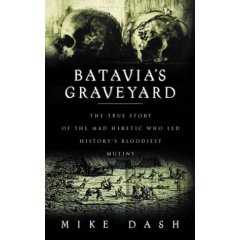
Though Captain Cook is credited with discovering Australia, Dutch trading ships had been sailing a course parallel to the continent’s west coast for almost 200 years. Of those ships, several had been lost off the uncharted coastline.
Mike Dash’s, Batavia’s Graveyard, is the true story, told in narrative form, of the worst civilian maritime massacre ever recorded.
In the autumn on 1628, the East Indiaman, Batavia, the largest and newest ships of the Dutch East India Company’s fleet set sail from Holland loaded with a King’s ransom in gold, silver and gems. She is bound for Java on a route which carries her close to the coast of the yet uncharted continent of Australia.
On board is Jeronimus Cornelisz, who during the voyage plots a mutiny with the Captain and other members of the crew.
When the ship is wrecked and the Company’s Agent sets sail in an open boat to seek help. He leaves over 200 survivors on the islands without water food or shelter.
In order to secure his survival, Cornelisz seizes control and begins to systematically kill the survivors. Without tainting his own hands, he forces his henchmen to hack to death more than 120 of men, women and children.
Batavia’s Graveyard is no fiction story. It is a poignant and chilling true re-enactment of the events which took place.
And it is said that if you happen to land at Houtman's Abrolhos, the tiny uninhabited archipelago just off Australia's west coast today, you can still find the sun-bleached bones of the victims.
Evocative, unbelievable and certainly unforgettable.
Batavia’s Graveyard by Mike Dash (2002)
Monday, November 27, 2006
HMS Beagle (replica) - to sail again
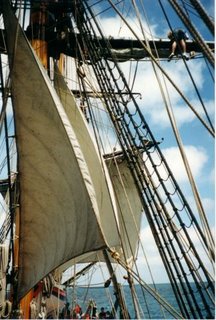
The vision of the Beagle Project Pembrokeshire is build a replica of the three masted barque which carried Darwin on his epic voyages (1831-1836). She will be “built of larch on oak frames, the hull will be copper sheathed and the boat will be fitted with modern propulsion, navigation, safety and communications equipment.”
Like the 1830’s vessel, she will be equipped with the latest technology, “to allow aspiring and practising scientists to use her as a platform from which to collect specimens and on which to store samples and stage experiments". She will be an inspiration to a new generation of scientists.
And on her first major voyage (2009) she will circumnavigate the globe, retracing the voyage the Beagle took in Darwin’s day.
The original ship:
When the Beagle was launched on the Thames in 1820, she was brig-rigged carrying only two masts with square-rigged sails. Because this design of ship sat low in the water and had a habit of turning-turtle if mishandled in heavy weather, it was sometimes referred to as a ‘coffin ship’.
In 1825, however, she was re-rigged as a barque with the addition of a mizzen (third) mast fitted with fore and aft sails. This configuration made the ship more manoeuvrable.
When HMS Beagle was commissioned in 1831 to continue survey work in the Southern Ocean, she was again refitted under the direction of Robert FitzRoy, her captain, who ensured she benefited from the latest in nautical technology. For example, for the first time in a Royal Navy ship, lightening conductors were fitted to all the masts.
At 235 tons, the Beagle’s masts and spars were extra strong, and chains had been used in place of ropes where possible.
It was under the command of skilled navigator and surveyor, Captain FitzRoy, the ship carried the young naturalist, Charles Darwin on the voyages which were to lead to his theory of evolution.
For more information on the Beagle Pembrokeshire Project go to:
The Beagle Project.
Photo (M. Muir - HMS Endeavour replica)
Friday, November 24, 2006
The Beagle Channel - revisited
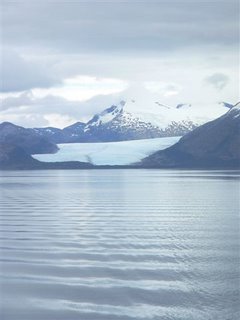
There are still places in this world where you stand in awe.
Where there is an aura of solemnity.
The Beagle Channel is one of them - and it is something you don’t expect when you just around the corner from Cape Horn.
Apart from its stark beauty, what struck me about it was its solemn stillness.
Glaciers and ice make little sound.
New-fold mountains sleep, their great stubbled chins pointed skywards while above them condors the size of worker bees wheel in effortless in silent circles.
A thousand streams and waterfalls glisten as they slip relentlessly over honed rock faces only to disappear in the wooded banks below.
Penguins and occasional whales grace the water, while on the scattered rocky outcrops, seals wallow unperturbed while on tiny islands innumerable cormorants hold out their flaccid wings to dry.
Beneath the crystal waters, tall weeds wave their golden fronds as the small boat passes above them leaving barely a ripple on the surface.
The Beagle Channel stretches 120 miles long and two miles wide, and Charles Darwin likened it to the valley of Scotland’s Lockness.
In his words:
The lofty mountains rise to a height of 3,000 and 4,000 feet…covered by a wide mantle of perpetual snow, and numerous cascades pour their waters through the woods, into the narrow channel below. In many parts, magnificent glaciers extend from the mountainside to the water’s edge. It is scarcely possible to imagine anything more beautiful than the beryl-like blue of there glaciers and the dead white of the upper expanse of snow. (The Voyage of the HMS Beagle).
The Channel is probably unchanged since the time HMS Beagle made its first passage in the 1830s and it will be that same scene which will greet the replica ship when she sails south in a few years time.
Thanks to Peter Grath, I have just learned of the Beagle Project Pembrokeshire,
Zoologist, Peter, and David Lort-Phillips director of the Darwin Centre for Biology and Medicine in Wales are co-founders of the project to build a replica of the Beagle.
For more information on this project go to:
The Beagle Project.
Wednesday, November 15, 2006
Squidoo Lens
In case you are not familiar with SQUIDOO sites - they are called 'lens' and are somewhere between a website and a blog.
They are free from http://www.squidoo.com and are easy to set up.
Squidoo is also a place to search for subjects you are interested in written by folk like you and me.
The profit from the lens go to you or the charity of your choice.
Having just finished reading Imperium my mind wandered back to my holiday in Rome this summer, and to the other places I visited in the Mediterranean.
As a result, I have set up a new Squidoo lens about that cruising holiday (mainly from material I posted earlier on this blog).
You can check the new site at: http://www.squidoo.com/cruisingeurope
I'm following that with a site on Cruising Antartica and one on Sailing across the Atlantic.
As I don't watch TV, it keeps me out of mischief.
Of my other Squidoo lens the most popular is still Tall Ships followed by The Black Thread, the lens wich tells about my forthcoming novel.
You can find those two links on the heading of this page.
They are free from http://www.squidoo.com and are easy to set up.
Squidoo is also a place to search for subjects you are interested in written by folk like you and me.
The profit from the lens go to you or the charity of your choice.
Having just finished reading Imperium my mind wandered back to my holiday in Rome this summer, and to the other places I visited in the Mediterranean.
As a result, I have set up a new Squidoo lens about that cruising holiday (mainly from material I posted earlier on this blog).
You can check the new site at: http://www.squidoo.com/cruisingeurope
I'm following that with a site on Cruising Antartica and one on Sailing across the Atlantic.
As I don't watch TV, it keeps me out of mischief.
Of my other Squidoo lens the most popular is still Tall Ships followed by The Black Thread, the lens wich tells about my forthcoming novel.
You can find those two links on the heading of this page.
Saturday, November 11, 2006
Imperium by Robert Harris

Imperium (pub Sept 2006) is an incredible read - a fictionalized biography of Cicero, the Roman advocate, orator and writer who became one of the most powerful men in Roman history.
It follows Cicero's career from his early days as a young advocate to the point of him becoming consul-elect. Not an easy path to tread with enemies as powerful as Julius Caesar and later, Mark Antony.
Battling bribery, massive corruption and treachery, Cicero used the only weapon at is disposal – his voice – to win support for his ideals from the aristocrats, tribunes, senators and the people of Rome.
His story is told through the gentle voice of his
slave/secretary/confidant, Tiro.
For me, Harris's historical novel brings to life this segment of Roman history
Thoroughly recommended.
11th November - Rememberance Day
Tuesday, November 07, 2006
Hornblower gets my ship's biscuit!

If you browse through Yahoo you will find specific groups dedicated to the various fictitious naval heroes - characters who have almost become household words, eg: Jack Aubrey, Richard Bolitho and Hornblower. And their creators are as well known as their protégés.
Having written one sea story (Sea Dust), and with a desire to write another, I decided it was time I investigated what it was that the authors of these characters wrote to attract such a large readership and to maintain them over a long period of time.
I tried Patrick O’Brian some time ago and only managed to finish Master and Commander. Half way through, The Far Side of the World, I stopped. For me, O’Brian’s prose consists of too many long sentences which need reading three times over. And he goes off at a tangents at times rather than sticking with the story.
I’ve also tried a couple of Alexander Kent’s. Unfortunately I couldn’t get the early books and started midway through the series where both Bolitho senior and Bolitho junior appeared. I found the double presence confusing.
My other comment is that in all Kent’s scenes at sea – I never once felt the movement of the ship!
Julian Stockwyn is on my list but I haven’t sampled his Kydd series yet.
Last week I bought the first six books of the Hornblower series and have already whizzed through book one and am now onto the second.
All I can say is I am loving the way CS Forester writes. Sure there are a lot of nautical terms but the settings are on fighting ships. Also there is plenty of action (much of it tongue in cheek) but the stories are what I would describe as rollicking good fun with lots of variety. His characters are interesting. I would describe Hornblower as mostly human with a tendency at times to superhuman qualities.
The series I would say encompasses the journey theme, the hero theme, good over evil story and even the Cinderella theme all rolled into one. They have all the ingredients of a good yarn and I’m looking forward to reading them all.
The complete series of CS Forester's Hornblower series are available from Amazon
Thursday, November 02, 2006
A long summer's day in Antarctica
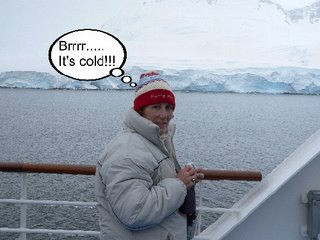
For us here in Australia, the southern summer is just around the corner, while for you folk in the northern hemisphere, winter is looming.
Here's a thought!
This picture was taken from the deck of the Oceania as the ship cruised the Antarctic Peninsula.
It was Boxing Day, 2004 - the middle of summer - and it snowed!!
Have to admit my hands were freezing but I couldn't operate the video recorder with gloves on.
What a fantastic experience that was!
Photo: PJ Ryan
Wednesday, November 01, 2006
Tall ship adventure - The White Squall
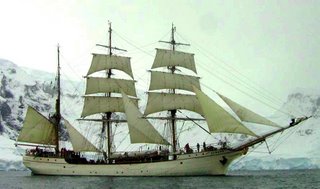
I thoroughly enjoyed watching the DVD of the White Squall.
It’s the true story of a tall ship adventure with a group of youths on a fully rigged sail training ship in the 1960s.
It brought back memories of my times on the STS Leeuwin and the voyages I took on the Indian Ocean a few years ago.
It also reminded me of the tropical low which struck the Star Clipper it neared the West Indies near the end of my voyage across the Atlantic.
Quite a storm – but what an experience!
I’ve been looking at the voyages offered by Victory Cruises on the Europa which sails out of Ushuaia on Tierra del Fuego. It’s voyages include the Antarctic Peninsula, Falkland Islands and across the South Atlantic to Cape Town.
Would love to go on that – but it will have to remain on the wish-list!
I was particularly struck by the final lines of dialogue in the movie.
“You can’t run from the wind. You face the music and keep going.”
How true. Just like life!
The image, by Rod Thompson, appears on the website of http://www.victory-cruises.com organisers of tall ship sailings in Antarctic waters – including voyages on Europa.
Saturday, October 28, 2006
Reflections on the canal
 ‘I’ve no idea how the working boatwomen managed to crochet with hands chapped and roughened by the cold and wet.’
‘I’ve no idea how the working boatwomen managed to crochet with hands chapped and roughened by the cold and wet.’Elizabeth Bryant, lace-maker extraordinaire describes herself as a Jack-of-all-trades, Master-of-non, despite her ‘Master’ accreditation in Cabin Lace.
Over the years Liz has turned her hand to many crafts, glass etching, stained glass and painting, to mention a few. ‘At one time I sold Victorian Peg People in Liberty in London,’ Liz said. ‘Children with kites or hoops; ladies with parasols. I also made models of several well-known smugglers, as well as thatched cottages, oast houses and churches. I enjoyed researching the smuggling history of the south east of England.’
But when Liz and husband, Paul bought a share in a narrowboat, she read up about the lives and skills of the working boatwomen. ‘I felt it was really important not to let them die out unappreciated. The Waterway Craft Guild does a lot to keep the old canal skills alive,’ she said. And it was through the Guild that she applied to become a ‘journeyman’ in the craft of Crochet and Cabin Lace.
Liz says she was most surprised when she was accredited a ‘Master’ and now, despite her vision impairment, tries to be worthy of the title by spreading the tradition as much as possible.
Today Liz and Paul have their own ‘project’ boat, Reflections. She says that when her husband has time from making double basses, ‘cellos and violas, they enjoy the beauty of the Inland Waterways.
The photo of Reflections was the one Liz used last year as a Christmas card.
It’s an ideal seasonal picture with the narrowboat crusted in a layer of frost. But Liz says, ‘Breaking sheets of thin ice on the canals is very musical, but frozen ropes hurt my hands. I’ve no idea how the working boatwomen managed to crochet with hands chapped and roughened by the cold and wet.'
Another article about Liz’s work was posted earlier. You can find out more about Liz and her lacework at http://www.englishcrafts.co.uk/
Also read about Paul Bryant, who 30 years ago taught himself to make violins. Today Paul specializes in basses and his instruments are found in many British orchestras. http://www.bryantbasses.co.uk
Wednesday, October 25, 2006
White ensign flies in Nelson's memory

The Church of All Saints in Burnham Thorpe flies an 18th century White Ensign in memory of Admiral Lord Nelson who was christened there by his father, Edmund - the rector.
Nelson had written that he would expect to be buried there along with his family, but his final resting place after the Battle of Trafalgar was St Paul's Cathedral.
When raised to the peerage in 1798 Nelson took the title Baron Nelson of the Nile and of Burnham Thorpe.
Only one other church is Britain is permitted to fly the White Ensign and that is St Martin-in-the-Fields.
The excellent photo comes from author, Hester Devenport. Hester's biographies of both Mary Robinson (Perdita) and Fanny Burney are available at http://www.amazon.co.uk
Saturday, October 21, 2006
Trafalgar Day - 21 Oct 1805
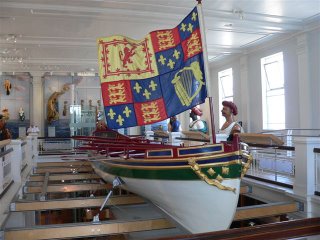 What better day to read the final pages of Pockock's book, Trafalgar, than today - the 201st anniversay of that awful battle.
What better day to read the final pages of Pockock's book, Trafalgar, than today - the 201st anniversay of that awful battle.As the majority of his story is made up of letters written on board the British, French and Spanish ships immediatley prior to, or after the battle, the words are poignant - the descriptions of carnage of both men and vessel - unbelieveable.
Likewise, Nelson's last few hours spent below deck are reported in such a way one feels as though one is present at his passing.
And following the French defeat, Pockock writes of the gales which lashed the fleets for several few days, sinking many of the prizes and robbing the seaman of their hard earned rewards.
Ironically hundreds of those seamen and marines, who survived that most horrendous sea battle, died at the hands of the hurricane-force storm, uncerimoniuosly joining their mates in the deep.
I now wish I had read the book before visiting Victory this year.
I must go back one day.
Photo (M Muir): The Royal barge of Charles 11 (built 1670) carried Nelson's coffin along the River Thames. (Royal Navel dockyard museum, Portmouth)
Monday, October 16, 2006
Canal crafts - the skill of the boatwoman
 What is this beautiful hand made item?
What is this beautiful hand made item?At a quick glance it could be an iced birthday cake.
No, you say!
Or a lace garter – elegant enough for a bride to wear!
Believe it or not, this is a pair or horses’ earcaps made in fine lace and decorated with brightly coloured tassels, the type crocheted by the boatwomen on the canals to keep the flies from the boat-horses’ ears a century ago.
On her website, Liz Bryant displays the crafts of the boatwomen who decorated their barges by trimming the shelves, portholes, chimneys and even their horses with lacework in various designs.
I find it sad that this sort of tradition, like the barges themselves, is dying and unlikely to return. Today, women’s hands are now occupied on production lines or keyboards, while few fingers learn to master a spinning wheel, a crochet hook or even a pair of knitting needles.
Having read about the skills of the boatwomen while researching my latest novel, I made sure the traditonal lacework was mentioned.
In my own defence, I can say that in my latter years, I learned how to spin sheep wool, alpaca fibre, cashmere and mohair and have made jumpers from my own wool.
I can tan a calf and goat hide and have made many a teddy bare and soft toy. I’ve even tanned a fish and snake skin.
And when my boys were growing up, I taught them both how to knit.
I wonder if today’s society has really progressed.
I don’t think most people could survive today without technology.
Elizabeth Bryant, an accredited Master of Crochet and Cabin Lace in the Waterways Craft Guild, continues this tradition, making crochet nets in a wide variety of traditional and original designs.
I thank Elizabeth for the image of the horse’s earcaps.
You can visit her site at: http://www.englishcrafts.co.uk/
Wednesday, October 11, 2006
Canal story - The Black Thread
Delighted to say that yesterday my latest manuscript was accepted by Robert Hale in London.
The Black Thread is a dramatic tale set on the Leeds and Liverpool canal and around the model-mill town of Saltaire in 1898.
I hope to see the book published by the middle of 2007.
For an insight into the background to the story, the British Waterways and the town of Saltaire, please visit my new site at: http://www.squidoo.com/theblackthread
The Black Thread is a dramatic tale set on the Leeds and Liverpool canal and around the model-mill town of Saltaire in 1898.
I hope to see the book published by the middle of 2007.
For an insight into the background to the story, the British Waterways and the town of Saltaire, please visit my new site at: http://www.squidoo.com/theblackthread
Tuesday, October 10, 2006
Anne Whitfield - published author joins Hale stable

Hi everyone and thanks to Marg for having me as a guest on her blog. We share the same publisher in Robert Hale UK, but my first release with that publisher isn't out until Feb 2007.
I live in the beautiful Southern Highlands area of New South Wales, Australia. I'm married with three children and have strong ties with Yorkshire, England.
I write historical fiction, contemporary novels and short stories all of which are set in both Yorkshire and Australia.
My first historical novel - a USA release, is Kitty McKenzie set in York, Yorkshire 1864. Left bankrupt and in charge of her siblings' welfare, Kitty faces an uncertain future that tests her strength of character.
For more information about me and my books please stroll over to my website or blog.
My Website: http://www.annewhitfield.com/ Blogspot - http://annewhitfield.blogspot.com/
Wednesday, October 04, 2006
Reliving 'Trafalgar'

Me thinks its about time I went to sea again.
Would love to write another sea story.
Currently reading Tom Pocock's Trafalgar.
Having walked on the decks of Nelson's flagship, HMS Victory, makes the action, which took place at sea 200 years ago, come alive (see HMS Victory post last month)
Have also just ordered from Amazon, the first five books in the Hornblower series. I am looking forward to reading those - if I can't sail away, I can at least dream a little.
Photo: Setting sail on board HM Bark Endeavour replica in the Indian Ocean off Perth, Western Australia (M Muir)
Summer around the corner
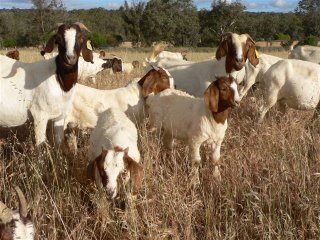
October already!
Goats are happy and all the kids have grown well.
The grass and weeds in the garden have gown too well and need major attention!
Last week I sent off my latest manuscript and must now wait to see if it is accepted.
I'm waiting to receive copies of The Twisting Vine published 31 August - they've not yet reached Western Australia!
Also waiting on Ulverscroft large print copies of Sea Dust - also not yet arrived. I'm anxious to know what the new edition looks like.
Must start thinking about next novel and start work on it in a couple of weeks.
Must start planning a tall ship talk which I'm due to give to a Perth yacht club in a month's time.
Grandson coming to stay, so I guess all the above can wait for a few more days.
Thursday, September 28, 2006
Anaphylaxis in Goats?
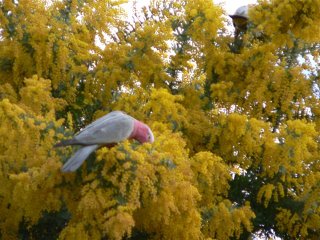 Well I've seen many things in 17 years of goat farming, but yesterday was the first time I had seen an anaphylactic reaction in a goat.
Well I've seen many things in 17 years of goat farming, but yesterday was the first time I had seen an anaphylactic reaction in a goat.Well, that was my estimation of what it was and I'm not a vet - so if anyone can correct me please do so.
The goat was in poor condition and as we are in a cobalt and selenium deficient area here in Western Australia, I gave her a vaccine of 3 in 1 with selenium and a 4 ml injection of B12.
I administered the injections subcutaneously.
Within about 5 minutes of the injection, the goat was hyperventilating (rapid breathing, her mouth was open, her tongue looked bluish and thick.
In all the reaction probably lasted between 7 - 10 minutes.
My assumption was that she had suffered an acute allergic reaction to one of the injections - most likely the B12 as I had exceeded the recommended dosage.
My immediate worry was that the reaction was causing her throat and tongue tissues to swell and her airways to tighten, as in a penicillin reaction or asthma attack.
My only thought for a solution was to give her some Ventolin by inhaler.
I administered four of five puffs into her mouth though I think most got blown out with her rapid puffing.
Whether my home-grown diagnosis was right or whether the home-grown treatment helped or hindered, I don't know.
If anyone can advise me, I'd be pleased to receive your comments.
What I do know is that the doe in question is alive and feeding today and no worse for her 'funny turn'.
Photo: M Muir - Pink and grey galah feeding on acasia in garden
Do goats grieve?
 I believe they certainly do.
I believe they certainly do.With the goats just kidded, I feel for the ones whose kid’s die for one reason or another. If/when it dies, the doe paws it and tries to get it onto its feet. She licks it, and at night she lays beside it. If you remove it then she will go around for two days looking for it and calling for it. It’s an easily recognisable call, quite plaintive.
But it’s not just newly kidded does who show feelings of loss.
Goats are very family oriented. They stay together and sleep together in family groups.
I sold some goats yesterday and didn’t realize I had sold the 3 previous years offspring of one six year old doe. She had a one year old, a 2 year old and a three year old..
Today she had been wandering around the paddock crying/calling and looking for them everywhere.
Don’t I feel like a real rotter.
Wednesday, September 27, 2006
Goats - kidding ends for another season

With the last kid born yesterday, that is the end of my kidding season for 2006.
A total of 19 new members to my small flock.
It was one of those seasons where lots of things didn't happen as they should but I won't bore you with the details.
Kids look good and most are at the stage of chasing around like a mob of little puppies.
We have a reasonable amout of feed on the ground, though the winter has been very dry and it started growing very late.
Will add more pictures later.
Saltaire - a remarkable town
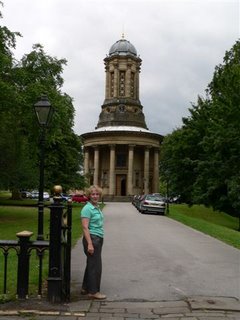
Saltaire was built on the banks of the River Aire and the Leeds and Liverpool canal in the 1830s, It's founder, Sir Titus Salt, was an extraordinary man of vision and philanthropist.
It is said that in his lifetime he gave half a million pounds to charity (in the 1800s – that was a considerable amount of money).
Not only did he build a mill and town for his workers, but he provided everything for them including modern (in those days) housing, a hospital, churches, schools and recreation areas. But being a man of sober habits, he did not permit the town to have either an inn or a pawn shop.
Built in stone, Saltaire is designed in the Florentine style.
The Congregational Church (now the United Reformed Church), is an excellent example of Italian architecture.
Photo M Muir – Yours truly during a visit to the unique mill town
Saltaire - Goat and Alpaca fibre
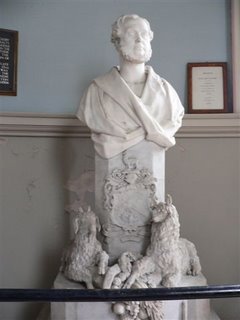
From the 1850’s Sir Titus Salt was importing alpaca fibre from South America, and also mohair (which comes from angora goats) to add the luxury sheen and feel to his yarn.
Today Salt’s mill still uses these exotic fibres to produce its quality speciality cloths.
Photo: M Muir – The bust of Sir Titus Salt today stands in the entrance to the United Reformed Church (formerly the Congregational Church).
At his feet are an alpaca and an angora goat
Saltaire and 'The Black Thread'
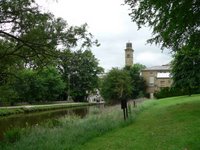 I chose Saltaire as the setting for my latest manuscript, The Black Thread.
I chose Saltaire as the setting for my latest manuscript, The Black Thread.The title refers to the body of still water which runs across England – the Leeds and Liverpool canal.
It is a historical fiction novel set in 1898.
I completed the manuscript this week and have forwarded it to my agent.
I now wait with fingers crossed for the outcome.
Searching for an apt quote or verse to go inside the cover, I came across The Lady of Shallot by Alfred Lord Tennyson.
As I read it I found its content had some similarities my story:-
The Lady is alone and desperate.
She is on a barge (shallop).
It is being towed by a horse.
She is on her way to Camelot (a visionary town – just like Saltaire was).
She waves her hand and is known in all the land….
If The Black Thread is accepted for publication I would like the following verse from Tennyson to be included.
By the margin, willow veiled
Slide the heavy barges trailed
By slow horses; and unhailed
The shallop flitteth silken-sailed
Skimming down to Camelot:
But who hath seen her wave her hand?
Or at the casement seen her stand?
Or is she known in all the land,
The Lady of Shalott?
Photo: M Muir - Salt's New Mill and the L & L canal taken from the grounds of the United Reformed Church
Cruising Europe - first stop Rome
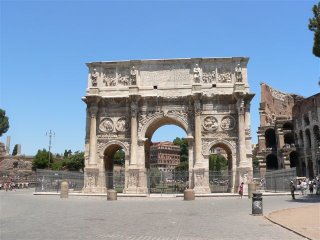 A bit belated, but here are a few pics from my recent trip to Europe.
A bit belated, but here are a few pics from my recent trip to Europe.I’m sure there are lots of you who have ‘done’ these destinations, and thought it would be nice to share memories.
How about ROME – I started and ended my cruising holiday there – three days in the Eternal City.
I visited so many places it hard to remember them all. Of course there was the Coloseum, The Trevi Fountain, The Spanish Steps and the magnificent modern war memorial. Even stood in the field of Maximus which is nothing more than a long oval expanse of grass – but that is where the chariot races used to be.
But I think for me the trip to the Vatican City was most awesome (see final post in this series). The artwork is absolutely unbelievable and there is just so much of it. The Cistine Chapel with it’s famous ceiling is just a drop in the ocean. St Peter’s Basilica is another awesome place and I was pleased to see that there was no cost to go inside.
A few things of practical interest for anyone going: I booked a hotel over the internet – easy peasy – and got one almost right outside the main Terminii station – that is just so handy for the metro and country trains.
Also if you are on a cruise don’t pay the ships cost for transort to Civitavechia – they’ll want and arm an a leg for it. The trains cost a few dollars – only proviso is that you can walk a few hundred yards at the other end.
Next stop Naples
Photo: M Muir - Arch of Constantine with the Coloseum on the right and the Roman Forum on the left (2 pillars showing)
The Colosseum - from the inside
If you have watched the movie, Gladiator, you wil remember other gladiators and a tiger appearing from below the arena.
I have to admit I thought that was a bit farfetched.
I now understand that it was the case.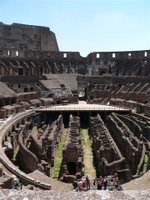
Looking at the actual Colosseum you can see the maze of corridors and pens beneath the area itself.
An awesome place.
Photo: M Muir - Inside the Roman Colosseum - The area at the far end where the floor level has been recreated gives an indication of the maze below the area where gladiators and wild animals were housed.
I have to admit I thought that was a bit farfetched.
I now understand that it was the case.

Looking at the actual Colosseum you can see the maze of corridors and pens beneath the area itself.
An awesome place.
Photo: M Muir - Inside the Roman Colosseum - The area at the far end where the floor level has been recreated gives an indication of the maze below the area where gladiators and wild animals were housed.
Naples, Vesuvius and Pompeii
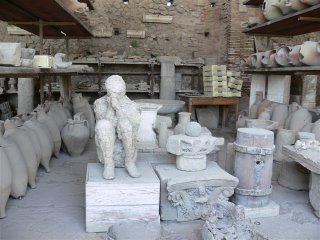 Cruise ships are great for getting you from one interseing place to another and I much prefer it to the hassle of airports. The only trouble is the time you have to visit the places of interest can be a bit limited.
Cruise ships are great for getting you from one interseing place to another and I much prefer it to the hassle of airports. The only trouble is the time you have to visit the places of interest can be a bit limited.However, the ship docked early in the morning in the port for Naples and I had booked to take the day tour which included climbing Mount Vesuvious and visiting Pompeii.
Vesuvius is a volcano which has blown its top on several occasions - the most well known when in destroyed the towns of Pompeii and Herculaneum in 79AD.
It looks pretty dormant today when you gaze down into the crater at the top, but I gather it is still classed as active in geological terms. The climb up was pretty long and tiring (hard work on dusty volcanic ash and rubble) but envigorating.
From Vesuvius it was down to Pompeii. This is somewhere I had always wanted to visit and had seen several documentaries about it on the TV over the years. I wondered if this would spoil it for me but it didn't.
The town is amazing and it is so big. Streets criss-crossing which in the first century had lots of shops (you can see the grooves in the doorways where the sliding doors were) and houses and public areas. The sanitation and drainage the Roman had puts the poor mediaeval Brits to shame.
Unfortunately, I didn't have time to go into the main museum which houses most of the best artefact, including the encased bodies of those who seccumbed to the ash, but there were a few at the site. What a terrible way to die.
I would have loved to have seen Herculaneum as that town is still being uncovered, but time did not permit so it was back to the ship for the two day cruise down to the Greek Islands.
Photo: M Muir - Frozen almost two centuries ago in volcanic ash - a falorn figure awaits its final resting place
Greece Islands - Mykanos
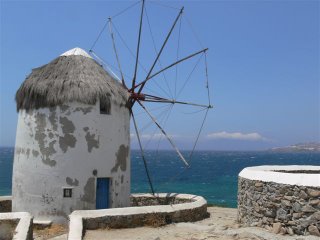 Cruising the blue waters of the Greek Isands is perfect. Theislands themselves are beautiful.
Cruising the blue waters of the Greek Isands is perfect. Theislands themselves are beautiful.Mykonos brought back memories of Majorca and the holidays I spent there at El Arenal, back in the early 60s, when they were still building hotels on the beach front. It all looked so pristine and white against the azure sea.
The Greek town is a bustling fishing port where fishermen hang the squid they have just caught, on the boat's rigging to dry.
Dominating the bay are the unusual thatched windmills and in the town itself the small shops are hidden in a meshwork of narrow alleyways.
Greek Islands - Santorini
 Santorini is quite different.
Santorini is quite different.The group of islands on which it is located are actually the caldera of an active volcano.
It's like the town (and a few others) is sitting right on the rim of a teacup with an almost perpendicuar drop to the water below.
The only access to Santorina is by cable car or donkeys which zig-zag up the cliff.
I chose the cable first up to take in the fantastic views. The cruise ship looked like a toy from above.
Like Mykonos, Santorini is made up of white buildings many with rounded domes, amongst them, some beautiful churches.
The museum contains archaelogical relics going back to the 3rd Century (and probably older) and it is thought by some that this area - before the massive volcano blew it away - was the lost island of Atlantis.
With a whole day to wander around, I took a local boat tour to the island in centre of the bay.
Stepping ashore you are overawed by the towering mounts of ugly black solidified rock of a geolocically recent lava flow.
It's amazing to imagine that within our lifetimes this was red molten lava sizzling into the sea.
We were assured that the island is safe today but the vents puffing green sulphuric steam are a reminder that there is a lot of unbridled power lurking not far beneath the earth's crust.
For the ones who brought their bathers there was the chance to swim in the warm thermal waters. I missed out on that.
With a bit of time remaining, when we go back to the jetty, I decided I had to take the doney ride up the cliff.
In retrospect, as I hate height, it might have been a mistake!
Sitting atop a donkey which seems to want to take the side of the path nearest to the edge, had me regularly closing my eyes and hoping for the best.
Needless to say, I made it to tell the tale.
Santorini is a fantastic holiday destination which I would go back to tomorrow given half a chance.
Off to Scicily next.
Photo M Muir - note cuise ship below the town of Santorini and new 'active' volanic island behind it
Sicily
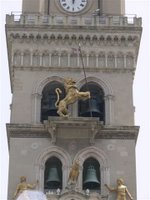
Steaming into the port of Messina in Sicily gives some indication of the character of the island which is best known for its Mafia connections and the its still active volcano, Mt Etna – the largest in Europe.
Overlooking the port is a golden statue (not sure if it’s Christ or the Virgin Mary – perhaps someone knows), while nestled against the wharf are three huge cruise liners. Further along there is a sailing jetty full of expensive modern yachts, but a little further along the harbour, a shipyard littered with partly sunken hulks.
Having climbed Vesuvius in Italy, I opted not to go up Mt Etna or take any of the other trips organised by the ship, so I spent the day wandering around the town.
The port city, like so many other port cities, is not a place I would recommend for a holiday but it did have some interesting building. Next to the cathedral is the famous bell tower. Rising 90 meters from the Cathedral square, it houses the larges animated clock in the world.
All the symbols and characters and astrological signs are in gold and at 12 noon for 15 minutes they ‘perform’ their show. Apart from the various gyrations and movements, the lion roars and the golden cockerel crows.
There is not a lot more I can add. It was Sunday and siesta time and everything was closed – that is off course apart from an Irish Pub across from the waterfront. As it was a very hot afternoon the beer went down very nicely, thank you.
Back on board for the cruise up to Cannes
Cannes - Nice - Moncaco including Monte Carlo

Still cruising: Cannes – Nice – Monte Carlo The ship docked off Cannes and we went ashore in the tenders to join a tourist coach to take us to along the French Riviera to Nice and Monaco/Monte Carlo. I don’t know what I had expected of these places and I suppose they lived to my expectations though with some reservations. It’s an expensive coast – you can tell by the number of huge yachts in the dozens and dozens of marinas, and the number of expensive cars parked outside the lavish hotels. A bit beyond my pocket!! But why do people flock there? Because it is THE place to be? – Probably! Certainly not for the beaches. The beach at Nice is pure pebble and you need shoes on to walk on it. I wouldn’t like to try laying on it. Monaco is certainly packed and compact – a tiny country of high rise-buildings, wrapped around a bay filled – (you guessed it) – with luxury boats. I can say I went up to the Monte Carlo casino but never went in. Not my thing, and besides it cost money and you had to be suitably dressed. I did take a drive around parts of the Grand Prix course which is steeper than it looks on TV. And also went in the cathedral to see the graves of Grace Kelly and Prince Rainier. Cruising is great in that you get a look at different places without staying for a fortnight in one spot. I’m pleased to have visited the Riviera but wouldn’t bother with it again. Next stop Florence.
Pisa
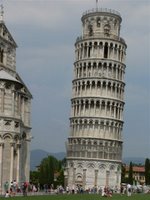
Florence and Pisa in a day is a bit of a rush – to say the least. Having docked at Livorno, I joined the coach for the drive through Tuscany to Florence about 2 hours drive inland. What I remember most about Florence is the number of statues and the number of tourists. Unfortunately you can’t go anywhere which boasts anything famous without being part of a mob, and unless you have lots of time to spare, it sometimes means you don’t have time to queue to get into all the places. (And who really wants to queue for an hour or more!). Of course the Duomo is a magnificent building, and I managed to climb the 400 + steps of the Bell Tower next to it, to look out over the city. The octagonal Baptistery was just across the square with the Gates to Paradise (I’m happy to wait for a while before being invited through those) . I walked over the Ponte Vecchio – one of the many bridges over the River Arno – and wasn’t tempted by all the jewellers’ shops which are actually on the bridge, all selling gold. I kept my eyes closed. Leaving Florence, the coach headed back towards the coast and stopped at Pisa on the way. I can say I saw the leaning tower but it was a bit of a rush being given only about 45 minutes. Enough time to walk around it and take some photos – not that all the world doesn’t know what it looks like. Still, I have crossed it off my “must see once in a lifetime” wish list. Back to the ship for the last night at sea. Last stop Rome.
Final Stop Rome and The Vatican
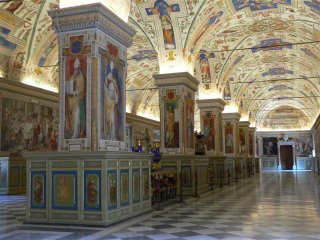
The Vatican city is a must for any traveller.
It is a most amazing places - the decorations are just mind-blowing.
And there is so much to see.
Visiting the Vatican was a great way to end the holiday.
Had a great time and saw some great places.
Would thoroughly recommend a cruising tour of the Mediterranean if you want to take a glimpse at the most significant tourist attractions.
Till next year .........
Friday, September 01, 2006
Sea Dust (Large Print) - Published today
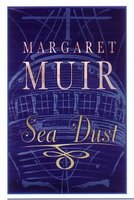
Title: Sea Dust
Author: Margaret Muir
Publisher: Thorpe/Ulverscroft
ISBN: 1-84617-443-0
Format: Large Print
Publication date: 1 Sept 2006
A historical novel/sea story set in Whitby in 1856
Emma Quinlan desperately wants to get away from her cruel husband.
When she meets a French seaman on the windswept Whitby cliff top, she considers accepting a passage on his sailing ship.
But when the time comes to sail, there is no berth available and she has no alternative but to stow away.
When she is discovered, the Captain threatens to put her ashore, but foul weather prevents this happening.
Unbeknown to Emma, evil, in the guise of a seamen, has stalked her on board. Biding his time, he waits for the opportunity to strike.
As The Morning Star sails into Cape Town, disaster awaits.
Will the ship make it to Sydney?
Will Emma survive the journey?
"Confronting and real. Margaret Muir pulls no punches in portraying the dark side of family life and the lives of those bound by the sea. This story inspires the reader to begin their own sea-faring adventure. Dramatic from start to finish." Nicole Biber (random testimonial)
Sea Dust (Ulverscroft Large Print) is available from UK libraries and Amazon.co.uk
Note: Although SeaDust (Hale hardback edition) is still showing on Amazon as available, it sold out and is no longer available.
Jacket Illustration by: (to be advised)
http://whatsnewinwomensfiction.blogspot.com
The Twisting Vine - Published today
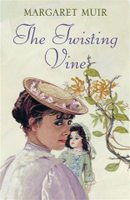
Title: The Twisting Vine
Author: Margaret Muir
Publisher: Robert Hale
ISBN: 0-7090-8132-4
Format: Hardback
Publication date: 31 August
A saga set in Yorkshire - 1896
Life is full of twists and turns. We never know what is around the corner.
Who would have ever thought I would see my second novel published only eight months after the first.
The Twisting Vine is a historical novel, set in and around Leeds, Yorkshire.
It begins in 1896 and spans a period of 25 years.
Synopsis:
With temptation thrown in her lap, Lucy Oldfield steals an expensive French doll from her dying mistress.
After losing her job at Heaton Hall, she returns to the squalid streets of Leeds where she falls victim to the lies of a confidence trickster.
Alone, and with a son to support, Lucy has little to look forward to, until a chance meeting with a stranger on a train changes her fortune.
When Lucy moves to the country to care for the ageing gentleman, she is provided with a cottage of her own. What more could she wish for?
But the menacing torments of an itinerant worker, and the outbreak of war, turn her world upside down. Then a sudden death and an unexpected discovery sees her embarking on a voyage to India.
But can fate have other cruel twists in store?
The Twisting Vine follows the fluctuating fortunes of Lucy and her son, James, over a period of twenty five years.
Their lives are loosely connected by the unobtrusive presence of the porcelain-faced French Bru. The doll’s apparel, which changes throughout the story, serves to parallel the ageing process.
To read an excerpt, visit http://margaretmuirauthor.com/
The Twisting Vine is available from Amazon uk (via website above) or you can request it from your library or any bookshop
Jacket illustration by Barbara Walton
Monday, August 28, 2006
Goats - Ten kids so far
 This morning was freezing and the tenth kid was born at 6 am.
This morning was freezing and the tenth kid was born at 6 am.There are two sets of twins so far and all doing well.
I took this picture a few years ago when I was running about 150 angora goats.
Angora goats produce mohair.
Angora rabbits produce angora fibre.
Mohair is a fibre - it's not wool or hair.
It is called the diamond fibre because of its lustre.
I loved the angoras but unfortunately they needed shearing twice a year and at one stage, with the cyclical price of mohair, it was costing me as much to get them shorn as I was getting for the fleece.
I gather now the price is up again - $30 to $50 a kilo for kid fibre - that's how the market goes. (Note: a good quality adult can shear 6 kilos of fibre)
The goats I have now are South African Boer goats which are bred for meat - though I don't eat them, I sell them on for breeding.
I'll have some update pictures of Boer kids later.
Photo: M Muir - Angora kids - Western Australia (c. 1996).
Friday, August 25, 2006
Goats – Associated with God or the Devil?
 While goats, particularly in the Middle Ages, were maligned as being agents of the devil, they have long been providers of food (meat and cheese), milk, skin and fibre (mohair and cashmere) products, and in many countries of the world are still major providers or food and income.
While goats, particularly in the Middle Ages, were maligned as being agents of the devil, they have long been providers of food (meat and cheese), milk, skin and fibre (mohair and cashmere) products, and in many countries of the world are still major providers or food and income.I, for one, have run goats for their fibre, meat and companionship for 17 years (about the same time as I have been writing – there must be a message in that somewhere – but I’ll get back to that later).
I found it interesting reading the following on a Mediaeval Bestiary website:
The goat's love of high mountains represents Christ, who also loves high mountains, that is, the prophets, angels and patriarchs. As the goat feeds in the valleys, so does Christ in the church, where good works are his food. The sharp eyesight of the goat shows the omniscience of God and his perception of the tricks of the devil.
I also like, The Prayer of the Goat
Lord, let me live as I will
I need a little wild freedom
A little gladness of heart
The strange taste of unknown flowers
For whom else are your mountains?
Your snow, wind? – These springs?
The sheep do not understand as they graze
All of them and always in the same direction
And then eternally
Chew the cud of their insipid routine
But I – I love to bound to the heart of your marvels,
Leap your chasms
And, with my mouth filled
With intoxicating grasses
Quiver with an adventurer’s delight
On the summit of the world.
Poem: Translated from the French by Rumen Goddem
Bestiary website referred to: http://bestiary.ca/beasts/beast163.htm
Photo: M Muir – Bakers Hill, Australia
Goats – The Isle of Capri
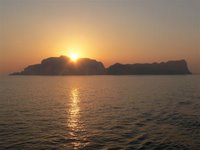 Some scholars believe that the Isle of Capri gets its name from the Latin word Capreae (goat) while others argue it is from the Greek, Kapros (wild boar).
Some scholars believe that the Isle of Capri gets its name from the Latin word Capreae (goat) while others argue it is from the Greek, Kapros (wild boar).Being a lover of goats, I like to think it is the former.
Nestled, in the blue waters of the Mediterranean, off the coast of Naples, the Isle of Capri is a large rock. Its steep cliffs soar almost vertically from the waters.
This magical island, which has long been synonymous with idyllic holidays and romance, certainly has magical qualities. It is splashed with the colour of hundreds of different flowering plants, and it is fragrant with their perfume, all year round.
It is said when you view the island lengthwise, it takes the form of a sleeping woman – her abundant long-flowing hair waving back from her head, her face, her breasts and her body lying naked on the sea.
I sailed past Capri as the sun was setting behind it.
Can you make out the shape of the mystical woman?
Photo: M Muir – July 2006
Wednesday, August 23, 2006
Goat update - New kid on the block!
 Well, the goats haven't had a mention for a while, so the arrival of the first kid about 2 hours ago will change all that. Expecting another 25 or 30.
Well, the goats haven't had a mention for a while, so the arrival of the first kid about 2 hours ago will change all that. Expecting another 25 or 30.Will post a few photos and let you know how the kidding goes.
Reminds me of a couple of other goat items I should have mentioned.
Photo: M. Muir - First kid for 2007 - Full blood Boer
What a week!
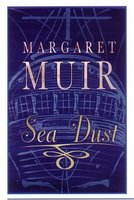
It's been a great week.
Today I saw a copy of the jacket cover of the large print edition of SEA DUST. Interesting - the stern of the ship looks liitle of HMS Victory (posted earlier) whereas the ship in the story is a mid nineteenth century barquentine.
Close enough though!
Also today, I picked up my author copies of THE TWISTING VINE from the post office.
I'm delighted with the final production. My compliments to Mr Hale and his staff.
Last but not least - the first of my goats just had a kid - and it's a doe. That's a good start. The rest will all follow within the next two weeks. I could end up with 30 kids.
Image: Sea Dust - Ulverscroft Large Print edition
Thursday, August 17, 2006
Fenella-Jane Miller - Regency author
 Though her current work in progress is set in WW11, Fenella-Jane Miller is best known for her Regency novels. Recently, she decided to take a break from writing in the Regency era. She feels it is always possible for authors to repeat themselves.
Though her current work in progress is set in WW11, Fenella-Jane Miller is best known for her Regency novels. Recently, she decided to take a break from writing in the Regency era. She feels it is always possible for authors to repeat themselves.On 31 August, her latest book, A Dissembler will be published, and the following day, LP Thorpe will reprint, The Unconventional Miss Walters, her first novel, in large print format.
Her other novel published by Hale in March, was, A Suitable Husband, and, coming up in February next year, is her next Regency title, The Mesalliance.
Living in an ancient cottage in an idyllic country setting is the ideal location for an author. And the part of Essex where Fenella lives is steeped in history. Local names and places sometimes pop up in her stories.
‘I have already sent photographs of St Osyth Priory to the artist, David Young, who creates my book covers,’ Fenella said. She is delighted with his work especially the jacket cover for, A Dissembler, and is looking forward to receiving his next rough sketch.
Apart from her three novels published by Hale Books, Fenella has written for DC Thomson’s, My Weekly Story Collections.
She has one long novel, set in England and India, partially based on her mother’s memories, which is almost complete.
Fenella has worked in various jobs, including a nanny, secretary, restauranteur and school teacher, but she always longed to be a professional writer.
Having achieved that goal, Fenella now writes every day, first drafting her manuscript by hand before transcribing it into the computer.
She has two children and two grandchildren and lives with her husband, Dusty, their border collie called Zoë,, and Tigger, an arthritic cat.
To read more about Fenella and her books go to: http://http://www.fenellajanemiller.co.uk/
Photo: M Muir – July 2006
Friday, August 11, 2006
Ancient religious book found in Irish bog
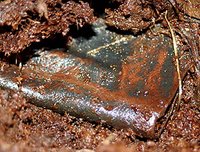 Hailed by the National Museaum of Ireland as the "Irish equivalent to the Dead Sea Scrolls", the discovery of an early Christian psalter that appears to date back as far as AD800 is the "greatest find ever from a European bog".
Hailed by the National Museaum of Ireland as the "Irish equivalent to the Dead Sea Scrolls", the discovery of an early Christian psalter that appears to date back as far as AD800 is the "greatest find ever from a European bog".The ancient religious manuscript was discovered two weeks ago in a peat bog at Faddan More, in north Tipperary.
Further excavation of the site also uncovered a fine leather pouch in which the manuscript was originally kept, as well as other small fragments.
It was considered that the book may have been deliberatley hidden in the peat all those centuries ago.
The large format manuscript comprises about 20 pages and appears to be of an Irish Early Christian Psalter, written on vellum.
One page, which was open when it was found, is still legible.
Psalm 89 is set out with 45 letters per line and a maximum of 40 lines to the page.
This find is not the first from the area - six years ago, a leather satchel was unearthed in the same bog. That has been radiocarbon dated to between the seventh and ninth centuries AD. Two ancient wooden vessels were also discoverd in the bog in recent years.
The area around Faddan More bog is rich in medieval history with the foundation sites of several monastaries located nearby.
Dr Pat Wallace, the National Museum's director said that the rare find: “testifies to the incredible richness of the early Christian civilisation of this island and to the greatness of ancient Ireland." She described the find as being of staggering importance.
The psalter will now be subject to a long and painstaking process of restoration,
Source material and photo: The Irish Times, The Irish Examiner and The Guardian
Tuesday, August 08, 2006
Barge building yard uncovered
 John Constable (1776-1837), probably England’s most famous landscape artist, grew up at his father’s Flatford Mill not far from Dedham.
John Constable (1776-1837), probably England’s most famous landscape artist, grew up at his father’s Flatford Mill not far from Dedham.Constable lived in the heyday of the waterways when heavy cargo in the area was transported by Stour Lighters or barges. And at his father’s dry dock, the young man would have watched the wrights building and restoring the barges which serviced the mill along the River Stour.
It was his early sketches of lighters passing through the locks, and of boatmen and their boat-horses which were the inspiration for many hi famous works.
‘Boat-building near Flatford Mill’ (Constable - oil on canvas - 1815) depicts a barge sitting in Flatford Mill’s 18th century dry-dock.
Until recently this boat lock had disappeared - covered over by tons of earth.
When it was discovered in 1985 and excavated by the Stour River Trust, the dry-dock was uncovered, together with a barge which was still lying on the original timber supports.
As part of the restoration work, the Trust rebuilt the dock gates and steps (near front left in picture) using Constable’s detailed sketches.
Wandering the area a few weeks ago, I noted that Flatford Mill and Bridge Cottage, Granary Barn and Willy Lott’s house all attracted much attention, but few visitors took interest in the remnants of the dry-dock which was so significant in Constable’s life and paintings.
Photo: M Muir – July 2006
Monday, August 07, 2006
A mouse on the canal bank!
 Though I love tall ships, I find canals and their boats intriguing.
Though I love tall ships, I find canals and their boats intriguing.I have to admit I’ve never travelled on one but I made a point of seeing quite a lot during my recent visit to UK as research for my current novel.
The SS Great Britain (see blog below) is situated adjacent to the Bristol Dock Navigation which is at the end of the Avon and Kennet Canal. Midway along that waterway is Hungerford and the village of Kintbury, where I spotted ‘Tittlemouse’ , a narrowboat, no doubt named after the Beatrix Potter character.
As with this boat, most owners take immense pride in their vessels keeping them clean and freshly painted and decorated with the traditional roses and castles designs. Many also have a colourful display of pot plants decorating the cabin roof.
And it is the Avon and Kennet which also boasts the most spectacular series of rises in England at Caen Hill (below).
Visit Granny Buttons at http://www.grannybuttons.com/granny_buttons/ for a picture of the SS Great Britain (5 August) taken from the waterway at Bristol
Photo: M Muir – June 2006
Caen Hill's amazing 29 locks
 If you were driving through to Devises near Rowde, you could easily pass the Caen Hill locks if you didn’t know they were there.
If you were driving through to Devises near Rowde, you could easily pass the Caen Hill locks if you didn’t know they were there.I thought Bingley’s five rise on the Leeds/Liverpool canal was remarkable but the 29 locks which make up this flight are amazing.
The series were built between 1794 and 1810 to lift the Kennet and Avon canal a height of 237 feet.
Though it’s original use was superceded by the railways in the early 1900s and eventually fell into total disrepair, restoration work thrity years ago has not only restored, but improved the system of locks. Today the Caen Hill locks are a popular and busy canal for recreational boaters.
Gazing up the 16 locks which form a straight line, one has to consider what an amazing feat of engineering it was 200 years ago.
Note: I will be writing more on the Leeds/Liverpool canal as time goes on especially the Leeds to Saltaire section. For more on this area visit: http://www.penninewaterways.co.uk/
Photo: M Muir - June 2006
Friday, August 04, 2006
Thursday, August 03, 2006
SS Great Britain - Bristol
I visited the SS
Great Britain in Bristol a few weeks ago.
This
extraordinary ship was designed 1839 in an era when square rigged shipped
sailed the seas, and when Admiral Lord Nelson and Trafalgar (see postings below) where still imprinted
on men’s memories.
Prince Albert
Launched the SS Great Britain at Bristol in 1843, the same year Charles
Dickens published, ‘A Christmas Carol’.
This monster
ship was the brainchild of Isambard Kingdom Brunel and its construction was set
to change the history of shipping. Here was an enormous iron-hulled ship that
not only had a powerful 1000 horsepower engine and propeller (quite different
from the paddle steamer type of propulsion), but also was rigged as a schooner
with six huge masts. She was the first of the great ocean-going passenger
liners.
Her first
crossing from Liverpool to New York was in 1845 took 14 days.
In 1852 she
began carrying emigrants to Australia in a time of 60 days.
The SS
Great Britain even carried the first England cricket team down under, in
1861, and between 1856 and 1857 she carried troops and horses to fight in the
Crimea.
In 1881, the
ship was sold. Her engine was removed along with two of her masts and she was
turned into a sailing ship, converted to a Windjammer – three masts carrying
square rigged sails and staysails.
She battled
the Horn numerous times on her way to San Francisco and circumnavigated the
globe 32 times in her career.
But by the
outbreak of World War 1, this once magnificent ship was being used as a coal
supply ship. Soon after the war she was scuttled and left to rust away off the
Falkland Islands. There she stayed for over thirty years.
The plan to
salvage her, to bring her back to Bristol and restore to something of her former
glory was a bold mission. The man responsible was Ewan Corlett, a naval
architect.
After towing
the hull home over 8000 miles of treacherous seas, the SS Great Britain
returned to the very dockyard where she was built exactly 127 years before.
At last, in
2005, after years of painstaking reconstruction work, this remarkable ship was
‘re-launched’.
As a visitor,
stepping aboard the SS Great Britain, dubbed ‘one of the most important
historic ships in the world’, is like stepping back in history.
You can walk
through the first class saloons, see the bunks of the steerage passengers,
wander the promenade deck lit by numerous slatted skylights from the deck
above, even see the heads (inside toilets) and the gaol.
Perhaps one of
the most amazing sights is the main yard which carried just one of its
billowing square sails. This single yard (which sat horizontally across the
main mast), is 100 feet long and weighs 7 tons.
With
passengers and crew totalling around 500 souls, the ship had to carry enough
fresh stores to cater to the passengers needs.
On a voyage in
1864 supplies included the following live animals - 1 cow, 3 bullocks, 150
sheep, 30 pigs, 500 chickens, 400 ducks, 100 geese and 50 turkeys not to
mention all the hay and grain to feed the livestock to keep them in prime condition
for the voyage.
If you scroll
down a couple of posts and you will see a picture of the ship’s elegant dining
room and find a further comment about the ship.
Subscribe to:
Comments (Atom)




